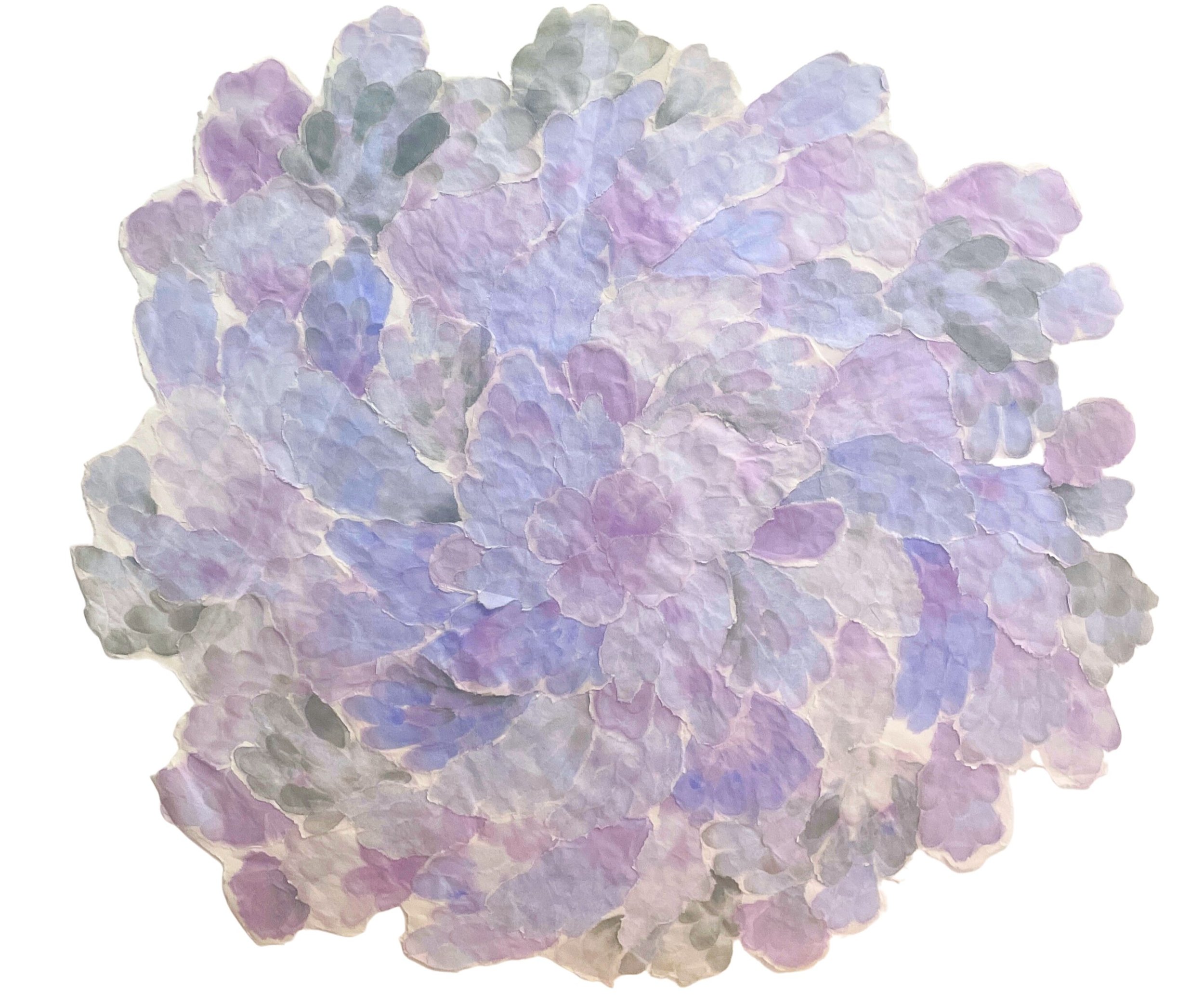Art and Environmentalism: Environmental Consciousness in Contemporary Fine Art
Allison Svoboda, Wave to Wave 5, Watercolor on Paper, 42 x 72 inches
Art has long been used as a platform to reflect the world we live in, including environmental concerns. As the world becomes increasingly aware of the urgency of climate change and its effects on the planet, more and more artists are incorporating environmentalism into their works. Environmental consciousness in contemporary fine art has become a growing movement in art and the global community. This blog post delves into the relationship between art and the natural environment in fine art today. We examine how contemporary artists use their works to bring awareness to environmental issues and how they impact art collectors and their collections, using gallery artist Allison Svoboda as one example.
Contemporary artists are using various mediums and techniques to address environmental concerns in their practices. Working within a lineage that began in the 1960s and 1970s with movements like Land Art, in which artists utilized the earth itself as a material, contemporary artists are now exploring a myriad of ways to encourage eco-conscious creativity and reflect on our changing environment. One example is Chicago-based artist Allison Svoboda, who creates ecologically conscious works using natural materials.
Recently, we had the pleasure of hosting Svoboda’s work in our June exhibit, Landscape Alchemy. For this exhibit, she created several large-scale works on paper in addition to several small works on paper. These included paintings made on the shore of Lake Michigan and stunning mandalas that she creates intuitively.
For her large-scale paintings, Svoboda soaks the paper in the water of Lake Michigan before applying pigments and inks. She responds to her setting, utilizing the wind, sand, and salt to create mesmerizing and meditative works that beautifully reflect the place in which they were made. In this way, she directly responds to the environment in which she creates the work, engaging in dialogue with the landscape she renders abstractly.
Her site-responsive process reflects a larger movement in ecologically conscious art-making today. Many artists today, like Svoboda, choose to make art situated within and directly responding to our changing landscape as a means of grappling with the climate crisis and human relationships with our environment. She writes of her work, “These large-scale landscape paintings are my own meditation on the power of the earth to heal us and its power to heal itself.” Her mesmerizing work encourages this observation in the viewer, spurring a quiet contemplation on the force of the earth and our symbiotic relationship with the natural world.
Allison Svoboda, Mandala Midsummer, Ink and Watercolor on Collaged Mulberry Paper, 60 x 60 inches
Allison Svoboda, Hydrangea Mandala #2, Ink and Watercolor on Collaged Mulberry Paper, 31 x 31 inches
In her mandalas, Svoboda creates geometric forms that reference natural occurrences, like the building and melting of ice or the beauty of water droplets binding together. Svoboda makes thousands of minute brushstrokes for her mandalas that converge to create hundreds of small paintings. She then combines these paintings to create the mandala structure. By referencing the naturally occurring fractal geometry of these structures, she encourages a greater examination of natural processes and our relationship to and impact on them.
Allison Svoboda, Vernal Equinox Waning Gibbous Moon #5, Watercolor on Arches Paper, 30 x 22.5 inches
This reflection becomes a powerful tool in the face of the rapidly accelerating climate crisis, whose violence is often rendered invisible, obscured by the rate at which it occurs and the scale of the destruction. By encouraging intentional contemplation of the landscape that surrounds us and to which we are intimately tied, Svoboda’s work encourages a more conscious consideration of our influence on the earth.
Svoboda’s work is just one example of the many contemporary artists working today who engage with the environment in their practice. For more information on art and environmentalism and a directory of artists engaging with the environment, we encourage you to check out resources like ecoartspace, which has served as a platform for artists addressing environmental issues since 1999.
Environmental consciousness in contemporary fine art is now a significant movement in the art world. Artists use their creativity, vision, and sustainable practices to address environmental concerns and bring awareness to the importance of preserving our planet. Using natural materials, exploring the human-nature relationship, and promoting eco-consciousness through art is a vital step towards a more sustainable future for the art industry. Art collectors have also played an essential role in the movement by supporting artists who pursue eco-consciousness in their works, influencing the demand for art that addresses the natural environment. As we move into the future, we can look forward to innovative and thought-provoking works of art that highlight the importance of preserving our environment and contemporary fine art's role in that effort.












